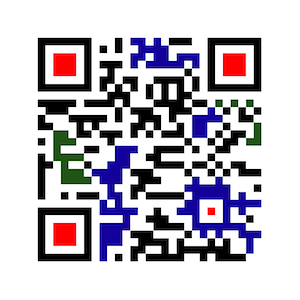What is the definition of a QR Code?
Original Article by Nicole Pontius updated on July 31, 2017 A Definition of QR Codes
Quick Response codes, or QR codes, are becoming more popular both in and out of warehouses and storage facilities. QR codes originated in Japan and are used to take information about an item or business and put it into a cell phone or hand-held scanner. QR codes first were developed to track parts in the manufacturing process of vehicles. Once the code is read by a cell phone or scanner, it gives more details about a business or item, shows a URL for even more information, provides coupons, and more.
QR codes encode information from left to right and from top to bottom. Also known as matrix barcodes, QR codes hold more data and can encode various types of data because they are encoded in two different directions at once, unlike standard barcodes.
Benefits of QR Codes
In supply chain management, QR codes are important tools for inventory management and manufacturing. Organizations use QR codes to track more than names and prices of products; they include information including serial numbers, part numbers, lots and dates, and other data. They also turn to QR codes when their barcode systems run out of capacity because the components they use exceed the maximum number of items they can encode in a standard barcode.
Inventory management professionals also choose QR codes because they typically are more easily read by cell phones and do not require bulky hand-held scanners to read them. In fact, QR codes can be scanned from any direction for 360 degrees, to make it easier for a device to read them and to lessen the chance of having issues with background interference. Additionally, QR codes can store up to a hundred times more information than a conventional horizontal barcode; businesses are choosing QR codes over standard barcodes because they can store and present URLs, geo coordinates, and text.
QR codes keep costs low because companies do not need to purchase scanners for recording inventory transactions efficiently. Warehouse and storage facility employees prefer to use smartphones for scanning QR codes because they are more convenient and easy to use. Smartphones also do not need to be physically connected to a computer or be in close proximity to one for inventory management operations in a warehouse. All in all, QR codes are becoming the codes of choice for supply chain operations because they contain more data and information and lend themselves easily to scanning with smartphones.
Disadvantages of Using QR Codes in Inventory Management
One of the biggest disadvantages of using QR codes in inventory management is their size. Typically, QR codes need to be at least 2 cm x 2cm in order to be scanned properly. If organizations want to put more information into the code, they need to enlarge its size to make it usable. This poses a problem for tracking smaller assets.
Many organizations already have asset tracking and inventory management systems that are based on barcodes. Removing labels and relabeling with QR codes is not cost effective for these organizations. Organizations also avoid using QR codes for inventory management because scanning them on mobile devices typically takes more time than scanning standard barcodes. This may account for why QR codes have not been as widely adopted as predicted.
Depending on your inventory management needs, QR codes may or may not be a cost-effective solution for you. Some companies choose QR codes for their inventory and asset management system because they want to enable workers to use smart phones to scan labels rather than hand-held banners. Other companies opt for standard barcodes over QR codes because they do not need to include more data and information in their labels and they need labels that can be scanned more quickly.
See Tool Tracking Tips
Free and open access to articles, case studies and tool tracking best practices.
